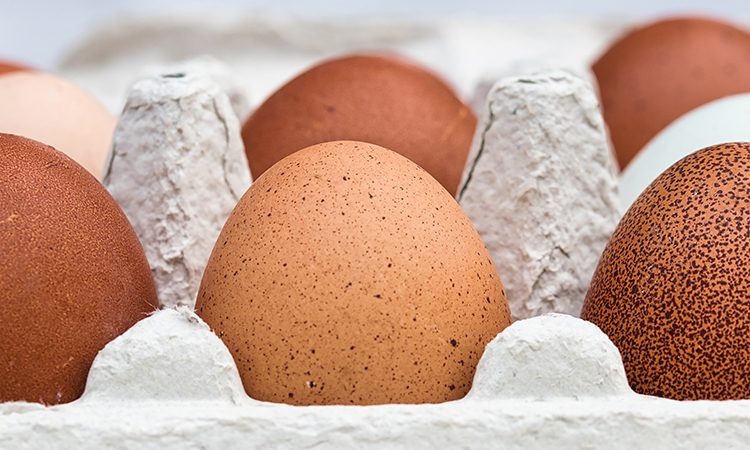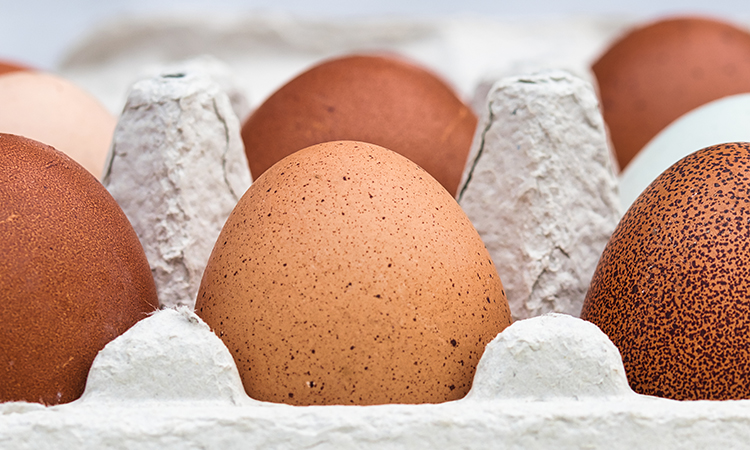Can you grow enough protein in your backyard?

Source: newfoodmagazine.com
Researchers in the US are advocating for more people to grow their own protein and use their backyard as an asset to cope with supply chain disruptions and make the country more sustainable.

Many turned to gathering their own eggs as the COVID-19 pandemic caused shortages in the US
In 2020, stores sold out of garden seed, coops and rabbit cages, disrupting the research of a group of scientists. Yet an unintended consequence of this was that those same scientists are now starting to get an idea of the amount protein people can grow in their backyards.
The 2020 meat shortages led many to wonder what to eat for protein when supply chains are disrupted. Some people turned to gathering eggs, raising animals and growing their own food. A team from Michigan Technological University and the University of Alaska Fairbanks claim that this work is well worth it. In a new study published in Sustainability, the researchers looked at how a typical household with a typical backyard can raise chickens, rabbits or soybeans to meet its protein needs.
People eat a lot of protein in the US – the average adult needs between 46 and 56 grams of protein every day, according to the National Institutes of Health (NIH) Dietary Reference Intakes (DRI). Americans love burgers, but few people have room to raise a steer next to the garage, but small animals are more efficient protein producers and are often allowed within city limits. The average backyard provides plenty of space, typically 800 to 1,000 square meters or about 8,600 to 10,700 square feet.
“You don’t have to convert your entire backyard into a soybean farm. A little goes a long way,” said Joshua Pearce, one of the study co-authors and Michigan Tech’s Richard Witte Endowed Professor of Materials Science and Engineering and professor of electrical and computer engineering.
“I’m a solar engineer; I look at surface area and think of photovoltaic production. Many people don’t do that – they don’t treat their backyards as a resource. In fact, they can be a time and money sink that they have to mow and pour fertiliser on. But we can actually be very self-reliant when we treat our yards as an asset.”
Pearce’s co-authors are interdisciplinary and include Michigan Tech students Theresa Meyer and Alexis Pascaris, along with David Denkenberger of the University of Alaska. The lab group originally came together to do an agrovoltaics study to assess raising rabbits under solar panels. But when they sought to purchase cages in spring 2020, they discovered animal equipment and home garden supply shortages throughout the country. Like many labs, the group pivoted and refocused their work to address impacts of the pandemic.
They found that using only backyard resources to raise chickens or rabbits offset protein consumption by up to 50 percent. To reach full protein demand with animals and eggs required buying grain and raising 52 chickens or 107 rabbits – but that’s more than most city laws allow.
While pasture-raised rabbits mow the lawn for you, Pearce said the “real winner is soy.” Consuming plant protein directly instead of feeding it to animals first is far more efficient. The plant-based protein can provide 80 to 160 percent of household demand and when prepared as edamame, the researchers say soy is like a “high-protein popcorn.” The team’s economic analyses show that savings are possible – more so when food prices rise – but savings depend on how people value food quality and personal effort.
“It does take time. And if you have the time, it’s a good investment,” Pearce said, pointing to other research on building community with gardens, mental health benefits of being outside and simply a deeper appreciation for home-raised food. “Our study showed that many Americans could participate in distributed food production and help make the US not only more sustainable, but more resilient to supply chain disruptions.”

